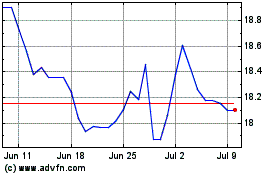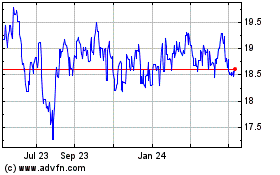British Manufacturing Sector Expands Most In 5 Months
July 01 2016 - 4:25AM
RTTF2
The British manufacturing sector logged a moderate improvement
in June, driven by solid acceleration in new work and output,
results of a survey, which received almost all responses ahead of
the "Brexit" vote, showed Friday.
The Markit/Chartered Institute of Procurement & Supply
Purchasing Managers' Index rose to 52.1 from a revised reading of
50.4 in May, its highest level since January, Markit Economics
said. Economists had expected a score of 50.1.
The survey was carried out between June 13 and 27 and Markit
Economics said almost all the responses included in the final index
readings were received prior to June 23rd's "Brexit"
referendum.
In a surprise historic move, Britons voted 52 percent to leave
the EU in the referendum, triggering political and financial market
chaos.
"Whether this growth recovery can be sustained will depend
heavily on whether the current financial and political volatility
spills over to the real economy," Markit Senior Economist Rob
Dobson said.
"While the Bank of England remains poised to act if needed and
the UK's trading relationships are unchanged during the two-year
negotiation period, there's a clear risk that ongoing uncertainty
will have at least some short term impact on manufacturing during
the coming quarters."
The big question is whether any negative impact from uncertainty
can be partly offset by a boost to exports resulting from the fall
in the pound, Dobson added.
The recent plunge in the pound of nearly 10 percent due to
"Brexit" is widely expected to cushion any negative impact from the
event. However, losing access to the single market and several free
trade agreement could cost the U.K. heavily in the long run.
In short, then, the U.K.'s meagre manufacturing sector, which
accounts for just 10 percent of GDP, is not going to prevent the
overall economy slipping into recession, Samuel Tombs, an economist
at Pantheon Macroeconomics, noted.
The survey showed that output increased at a faster pace in
June, underpinned by a solid acceleration in inflows of new work.
The increase in new orders was the fastest since last October.
Employment remained negative in June. Job losses were registered
for the sixth straight month.
Average input costs increased for the second successive month in
June. Consequently, there was a mild increase in selling prices, as
manufacturers passed on higher costs.
US Dollar vs ZAR (FX:USDZAR)
Forex Chart
From Mar 2024 to Apr 2024

US Dollar vs ZAR (FX:USDZAR)
Forex Chart
From Apr 2023 to Apr 2024
